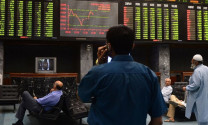Struggling to enhance trade for over a decade now
Pakistan’s manufacturing base is suffering from stagnancy.

Pakistan’s manufacturing base is suffering from stagnancy. CREATIVE COMMONS
Pakistan has historically been an agri-based economy and then over the 60s and 70s developed into an industrial economy as well. However since then the pace of industrialisation and manufacturing has slacked off and most of the growth has been in the services sector.
This is why, according to a recent report on open trade released by the World Bank, Pakistan’s position in world trade has barely changed over the past three decades. The report further says that the trade-to-GDP ratio has also shown a minimal increase over the past decade and lot of that has to do with the lack of sophistication in exports as well as the lack of dynamism in trade.
The World Bank report believes that open trade is central to any growth strategy. And then says that if Pakistan is to improve its trade competitiveness, it will have to ease up on trade tariffs and trade regulations.
This will include measures like preferential trade agreements to encourage trade creation as well as increased trade relations with India to benefit from growth there.
Some interesting facts are quoted in the report. For example, the fact that while Pakistan’s world market share has declined over the last 20 years (despite a moderate recovery after the global crisis), those of Malaysia, Mexico, and Thailand have doubled. This has created a lot of pressure on lagging economies like Pakistan.
The dominance of emerging economies like China and India, is not going to ease off. In fact, Pakistan has no choice but to increase productivity and restructure its industrial sector to enable it to cash in on global opportunities.
Going back to some of the numbers quoted in the World Bank report, it becomes clear how Pakistan has failed to keep up, despite being in one of the most dynamic trade regions in the world, and an interesting term arises, referring to Pakistan as a country that ‘undertrades’.
According to the report, Pakistan’s average trade-to-GDP ratio for 2008–10 was only 2.6 percentage points higher than that of a decade earlier, in contrast to the shares of its peers. In 1998–2000, Pakistan’s trade-to-GDP ratio was barely lower than China’s and much higher than India’s. Ten years on, both China’s and India’s shares nearly doubled while Pakistan’s remained largely stagnant, increasing only 2.6 percentage points, from 31.5% to 34.1%. Both other countries also showed higher rates of economic growth.
Over 1980–2011, Pakistan’s exports grew faster than the world’s but far more slowly than those of its South Asian peers. Indeed, Pakistan’s exports grew 13-fold, much less than the 30-fold in the rest of South Asia.
Protectionism and trade curbs
According to the report, one of the primary reasons for this lack of growth is the gradual regression to protectionism. The second reason has been an inconsistent and fairly non-liberal trade policy. The two are intrinsically linked.
Just by looking at the way Pakistan’s trade policy has fluctuated from protectionism to liberalism and back and forth repeatedly over the past 15 years, we can get an idea of the problem.
Starting in the mid-1990s, there was a flurry of liberalisation, including measures like reducing tariffs as well as simplifying the tariff structure. But this was short-lived and by the mid-2000s import substitution policies undid the gains of the previous decade. This was done mostly to protect select local sectors or producers.
According to the World Bank report, the Planning Commission (2011) reports that of the 906 manufactured products granted tariff exemptions, 91% benefited a single local monopoly producer, and 5% two producers.
This trend of reversals has made Pakistan the world’s seventh most protected economy, thus risking further undermining its already poor openness. The World Bank has quoted the Overall Trade Restrictiveness Index (OTRI) which suggests that the country’s overall restrictiveness has increased. On the OTRI – which ranges from in Singapore and Hong Kong, China, to 16 in the Islamic Republic of Iran — Pakistan reached 9.9 in 2010, up from 9.0 in 2004.
Published in The Express Tribune, September 23rd, 2013.
Like Business on Facebook, follow @TribuneBiz on Twitter to stay informed and join in the conversation.



















COMMENTS
Comments are moderated and generally will be posted if they are on-topic and not abusive.
For more information, please see our Comments FAQ